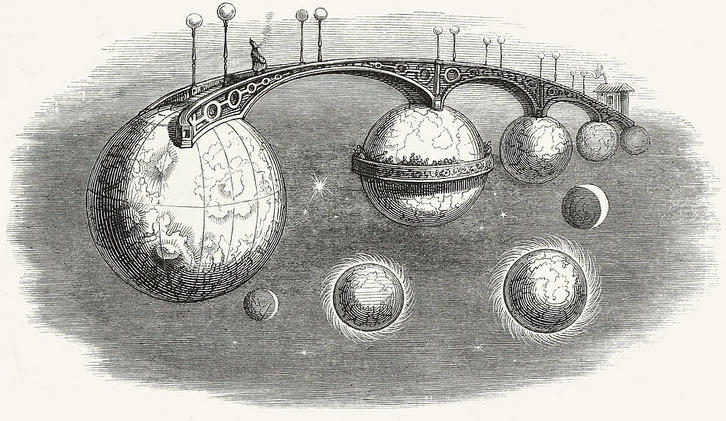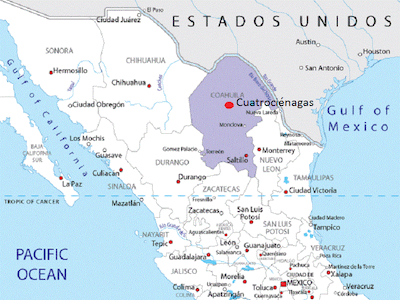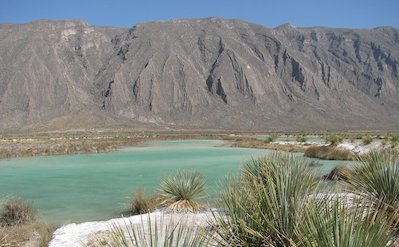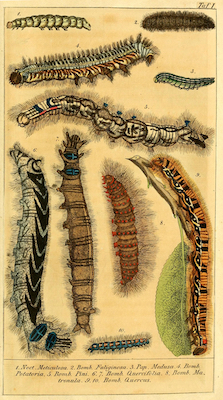
- Complexity Explorer /
- 15 Mar 2019
- Complex Systems Origins of Life Astrobiology Biology Ecology Evolution Earth Science
Now Hiring - Head of Education!
The Santa Fe Institute (SFI) seeks a scientist and educator to lead all components of our education program, both in-person and on-line. This includes maintaining the excellence of SFI’s core in-person Education Activities: Complex Systems Summer School (CSSS), the Graduate Workshop in Computational Social Science (GWCSS), our Research Experiences for Undergraduates (REU) program, as well as Complexity Explorer!
In addition to maintaining and evolving the programs above, the new Head of Education will have the opportunity to initiate new, innovative educational programs. In so doing, they will be able to take advantage of SFI’s position as the leading research center for the study of complex systems and our ability to convene leading scholars and practitioners from a diversity of fields from across the US and the globe.
The Head of Education is a leadership position. The successful candidate will collaborate with extraordinary staff and SFI researchers, both resident and external, to deliver in-person education programming to several hundred people yearly and online courses to thousands.
Learn more and apply:
santafe.edu/jobs/Head-of-Education
The Santa Fe Institute is an Equal Opportunity Employer. We actively seek and encourage applications from minorities, women, and people with disabilities.
 Exploring Origins of Life - Cuatro Ciénegas Basin
Exploring Origins of Life - Cuatro Ciénegas BasinComplexity Explorer is going on the road for the Origins of Life course. Linden will be filming a special segment about Dr. Valeria Souza and the Cuatro Ciénegas Basin - an origins of life and astrobiology study site here on Earth! Cuatro Ciénegas Basin is located in the Chihuahuan desert of Coahuila, Mexico and consists of a complex of springs (groundwater feed pools). Geologic and biologic evidence suggest this environment has had a persistent geologic stability for over 15 million years - allowing a unique and very old ecosystem to have developed. Ecosystems on Earth are generally marked by catastrophic geologic change (uplift, volcanism, etc.) such that established ecosystems are destroyed, and as new, abiotic systems are created they are colonized by biota from outside of that system. The long term stability of the Cuatro Ciénegas on both geologic and microbial evolutionary timescales allows us to have a glimpse into a system that was initially created both biotically and abiotically between 70 and 50 million years ago when the Western Interior Seaway covered this part of North America.
 The nutrient profile as well as the food web structure in the springs of the Cuatro Ciénegas basin gives us to glimpse into much deeper geologic time - the Precambrian era (550 million year ago) - just before multicellular life became dominant. The springs are very low in nitrogen and phosphorus, both essential nutrients for life (they are key elements in proteins, energy storage molecules, and genetic material). This low nutrient profile allows for microbial organisms to be the dominant life form as well as the foundation of food webs in the springs. As the microbial communities are a reflection of the geochemical environment, they serve as very poor sources of nutrients for their predators, creating a unique ecosystem compared to anywhere else on Earth. The metabolic signatures of these unique high diversity microbial communities expands our library of bio-signatures to look for life on other planets.
The nutrient profile as well as the food web structure in the springs of the Cuatro Ciénegas basin gives us to glimpse into much deeper geologic time - the Precambrian era (550 million year ago) - just before multicellular life became dominant. The springs are very low in nitrogen and phosphorus, both essential nutrients for life (they are key elements in proteins, energy storage molecules, and genetic material). This low nutrient profile allows for microbial organisms to be the dominant life form as well as the foundation of food webs in the springs. As the microbial communities are a reflection of the geochemical environment, they serve as very poor sources of nutrients for their predators, creating a unique ecosystem compared to anywhere else on Earth. The metabolic signatures of these unique high diversity microbial communities expands our library of bio-signatures to look for life on other planets.Microbial communities in the Cuatro Ciénegas Basin are often structured into microbialites (living stromatolites) - mats or clumps of microbes and calcium minerals. We know in the Precambrian these microbialites functioned as complete, self-contained biogeochemical cyclers. Today, Earth's biogeochemical cycles are connected at a global scale (think water cycle, carbon cycle). However, the self-contained microbialites from Cuatro Ciénegas allows us to explore questions about the evolution and ecology of very early ecosystems - when life or life lik
 e systems were much more isolated from each other, but still biogeochemically complete.
e systems were much more isolated from each other, but still biogeochemically complete. The Cuatro Ciénegas basin has diversity and numbers of unique species reminiscent of the Galapagos Islands, made famous in Darwin's observations leading to "On the Origin of Species". It provides a living laboratory to explore questions from many fields important to the study of the origin of life and astrobiology - chemistry, geology, ecology, and evolution. To date, one spring complex (Churince) has been dried up due to agricultural irrigation in the area and many others are under threat. Efforts are underway to make a "Precambriam Park" to protect these incredible ecosystems as well as establish sustainable farming practices that can co-exist with the springs. We are thrilled to be featuring these unique ecosystems in the Origin of Life course and if you want to know more here are a few resources. Hasta la proxima!
Cuatro Ciénegas: Threatened oasis beckons ASU researchers
ASU wetlands ecologist explores ancient sea in the desert
The Cuatro Ciénegas Basin in Coahulia, Mexico: An Astrobiological Precambrian Park
The lost world of Cuatro Ciénegas Basin, a relictual bacterial niche in a desert oasis
Complexity Explorer 2019 Course Schedule

While exact dates are still being ironed out for some of our courses based on instructor availability- here is when our active session courses (you can earn a certificate) will be in 2019. Enrollment begins approximately one month before the course date.
Winter/Spring 2019
- Nonlinear Dynamics (free, in-session through May 15th)
Summer 2019 (June through September)
- Origins of Life (free)
- Introduction to Agent Based Modeling (course fee, scholarships available)
Fall 2019 (October through December)
- Introduction to Complexity (free)
- Introduction to Dynamical Systems and Chaos (free)
The caterpillar illustration comes from Chronologischer Raupenkalender, oder, Naturgeschichte der europäischen Raupen (1837), an entomological volume by Christian Friedrich Vogel outlining which caterpillars appear each month, as well as details on how to keep caterpillars and catch the butterflies into which they will transform. In essence - a caterpillar calendar!
To interact with fellow Complexity Scholars join the Complexity Explorers Facebook group.
